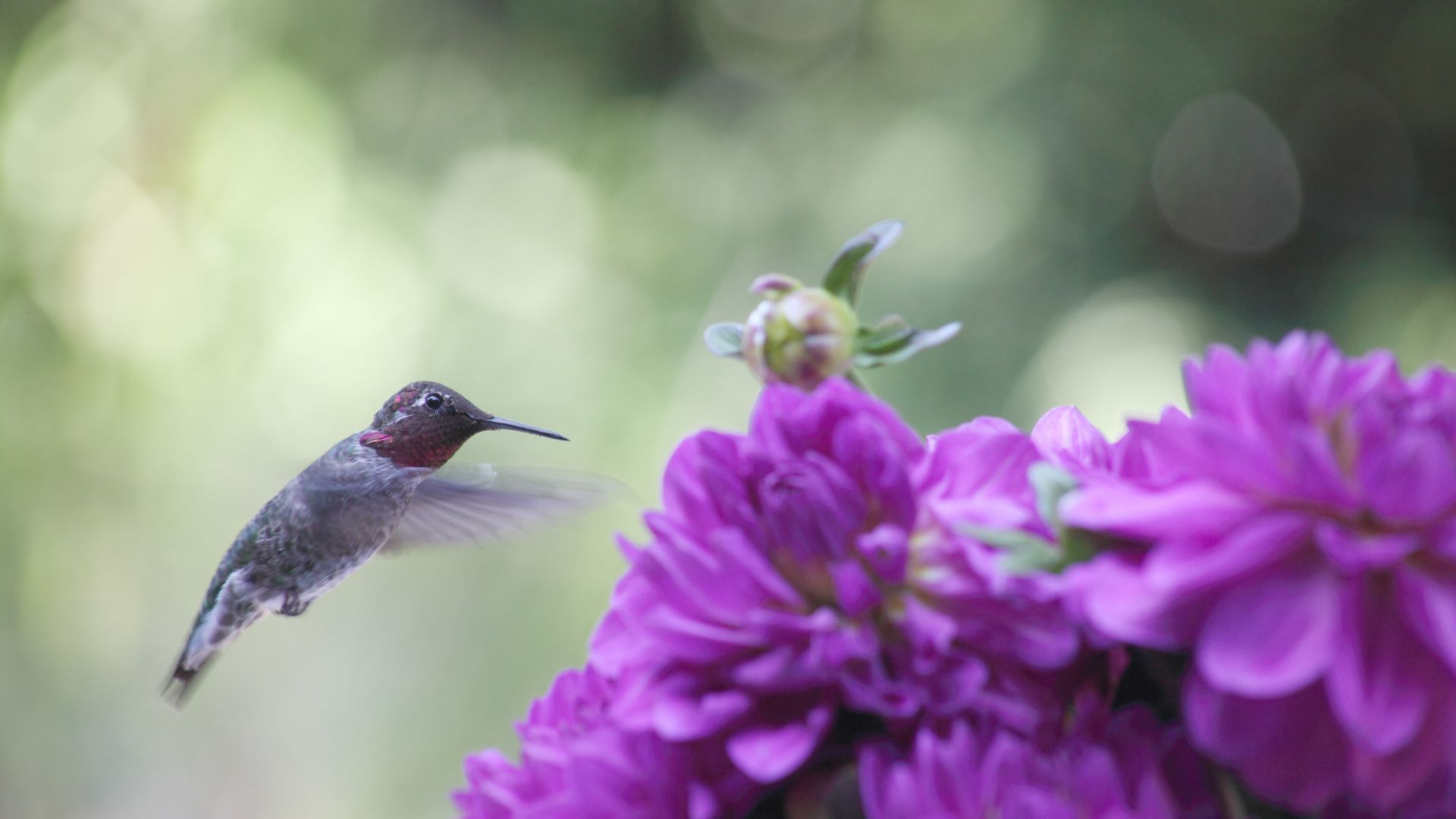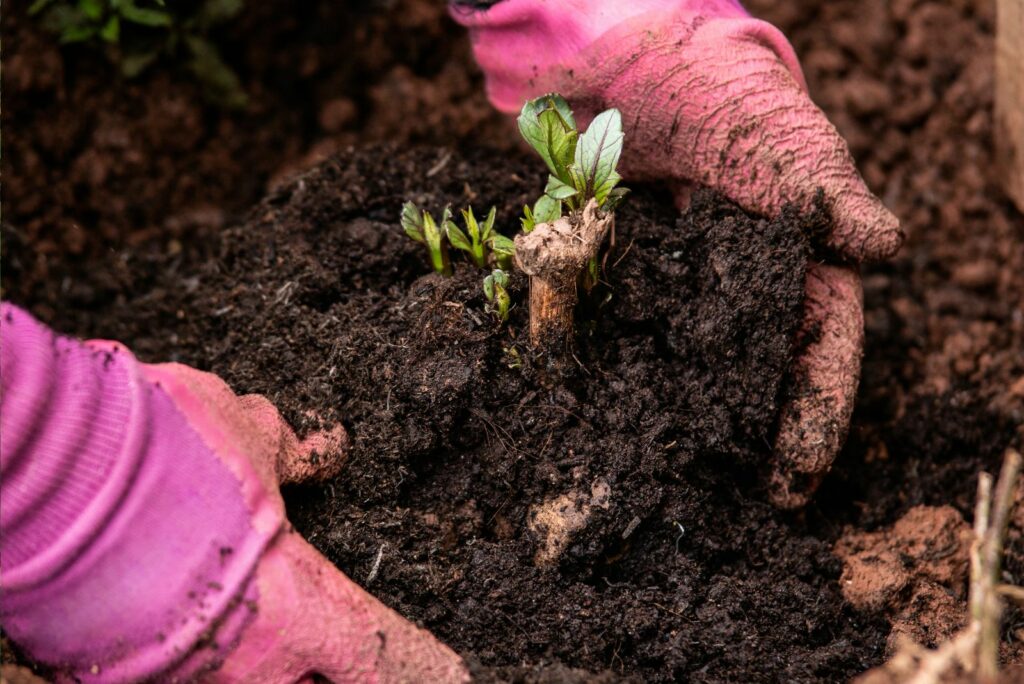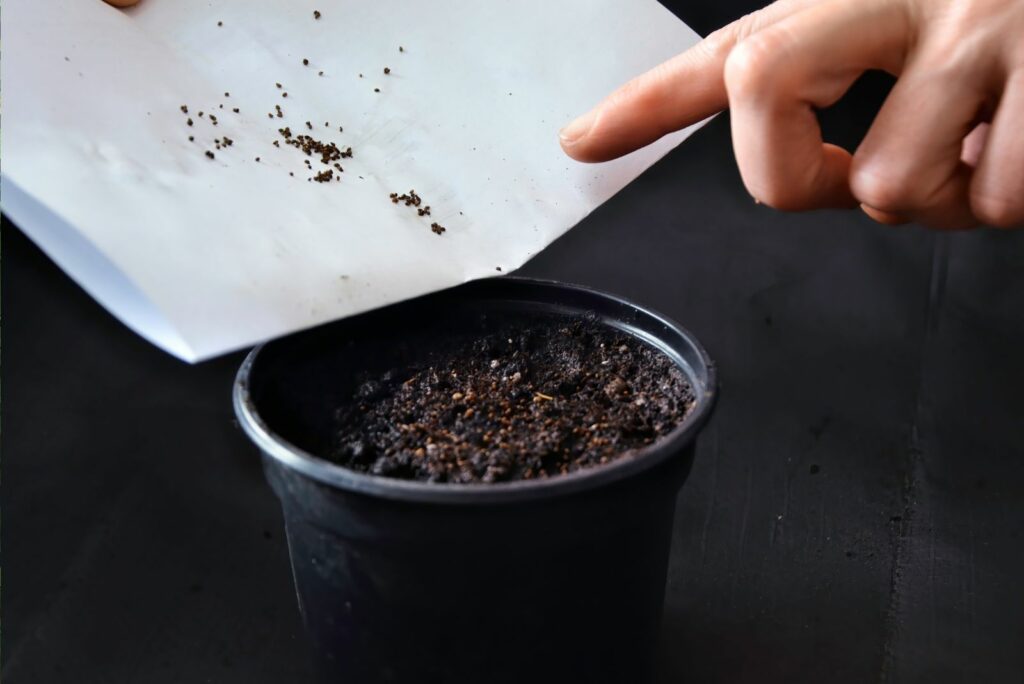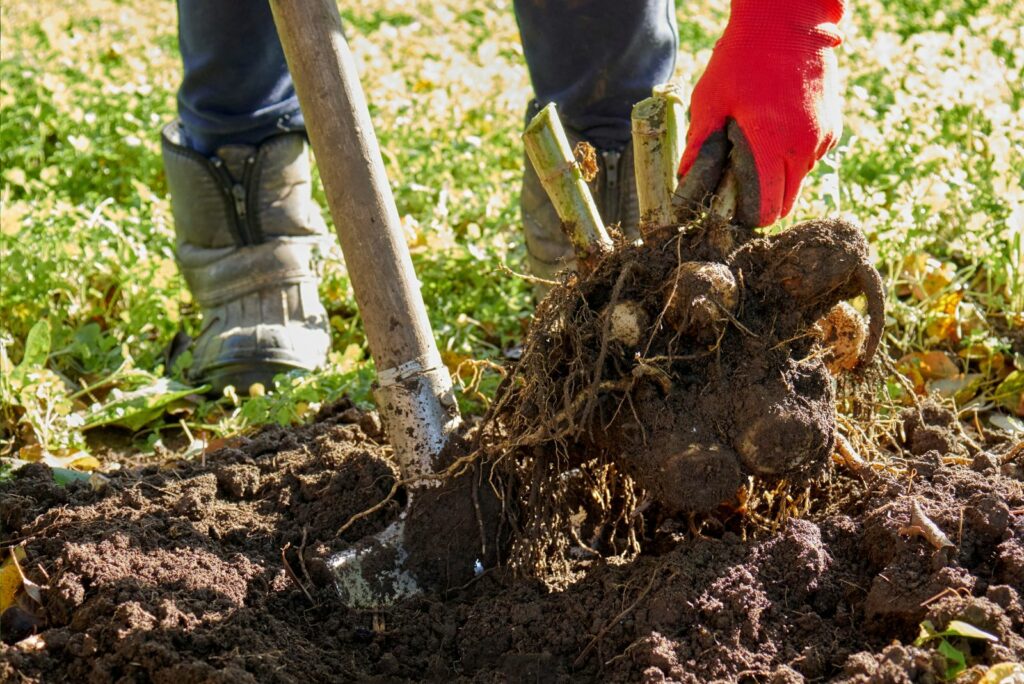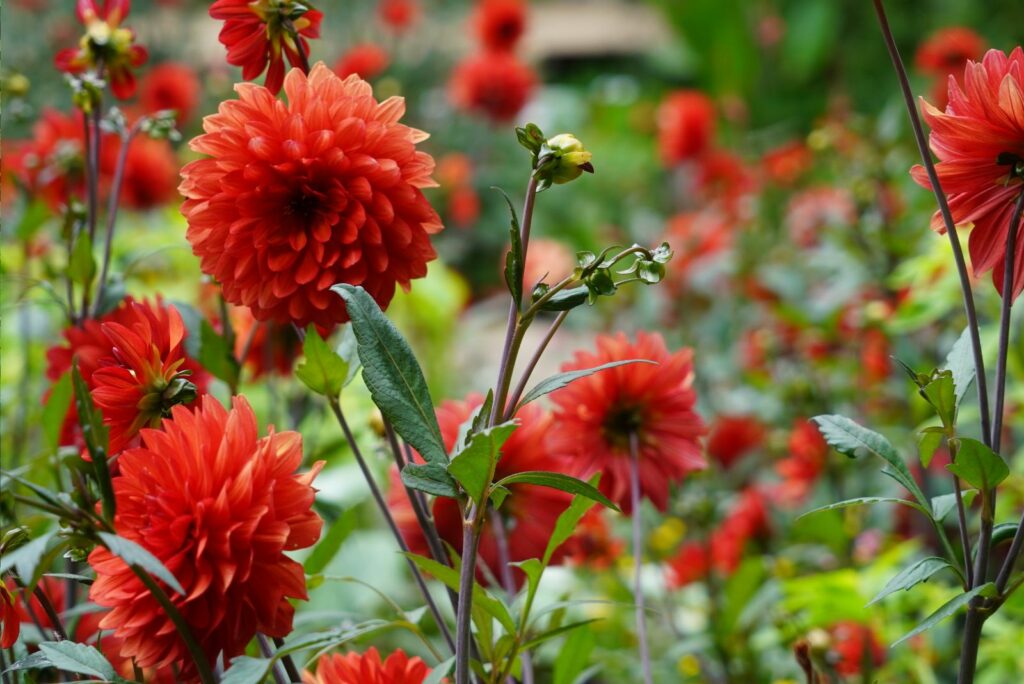I planted dahlias because I thought they were stunning, but I had no idea they’d also attract so many cheerful hummingbirds to my garden!
However, I did opt for open-faced varieties like collarette dahlias – these types make it easy for hummingbirds to reach the nectar, unlike ball-shaped blooms that hide it.
With their vibrant colors and easy care, dahlias can make any yard more cheerful and alive, especially when those chirping birds come along.
If you want to know more about dahlias and how to grow them, here are some useful tips to get you started:
1. Choose The Right Dahlia Variety
Growing dahlias starts with a choice: tubers or seeds.
With tubers, you know exactly what you’re getting, and it’s always the variety that hummingbirds will love. Seeds, on the other hand, are like rolling the dice. Thanks to their genetics, you’ll get an exciting mix of shapes and colors.
Personally, I love the surprise factor of seeds, but if you’re set on hummingbird-friendly open-faced blooms, tubers are a safer bet.
Either way, you can’t go wrong – your garden will look amazing and those cheery birds will be grateful.
Also read: The Perfect Fall Flower Variety That Will Have Hummingbirds And Butterflies Dancing In Your Yard
2. Wait For The Perfect Moment To Plant Your Dahlias
When it comes to planting dahlias, it’s important to get the timing right.
If you’re using seeds, start them indoors two months before the last frost and transplant them outside when it’s warmer.
Tubers are more low-maintenance – you can plant them directly in the garden a week or two after the frost. They love basking in the sun so make sure to find a bright spot for them.
Give them well-drained, nutrient-rich soil and a bit of monthly low-nitrogen fertilizer. If everything goes well, you’ll be able to enjoy a wonderful flower display!
Also read: Grow Dahlias In These Places To Create An Abundance Of Flowers In Your Garden
3. Make Sure To Dig Up Those Tubers In Colder Climates
If you live in zones 7 and up, your dahlia tubers can survive the winter right in the ground. But in colder climates, you’ll need to dig them up and store them – don’t worry, it’s easier than it sounds.
Even dahlias grown from seed will develop tubers by the end of summer, so you can replant them next year!
But what you can also do is save the seeds and start fresh in the spring. I’ve done both and it always amazes me that tubers sprout again after a long winter (it’s like they were taking a long nap!).
Also read: Help Your Hummingbirds Build Their Nests By Growing These Plants.
4. Now, Let Hummingbirds Enjoy Delicious Dahlia Flowers
Remember what I said earlier – you’ll have to stick with open-faced dahlia varieties. Try growing red varieties as well, since hummers are drawn to the color like it’s a bird magnet!
You could also add a birdbath for drinks and perches for resting so those cheerful creatures get the whole package. And if you grow other hummingbird favorites like salvias and columbines, your entire garden will be buzzing with love (just like a nature documentary!).
However, I would recommend you skip the pesticides because they love snacking on small bugs and will handle pest control for you.
By planting dahlias, you’re not just making your garden prettier – you’re also creating a home for pollinators and charming birds that’ll definitely make your outdoor space livelier.
Once those flowers start blooming, you and hummingbirds will both be hooked for good!
Want more options to attract hummingbirds? If so, be sure to check: 10 Best Flowers For Attracting Hummingbirds Into Your Garden

